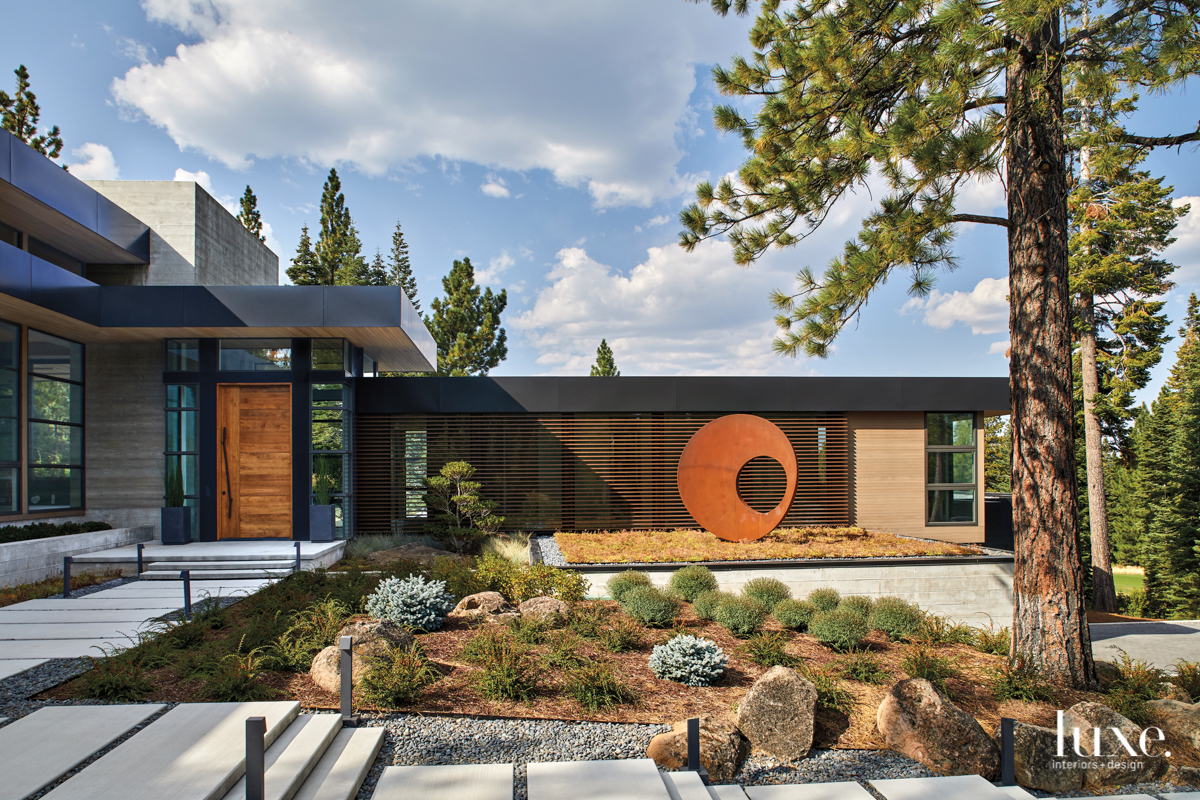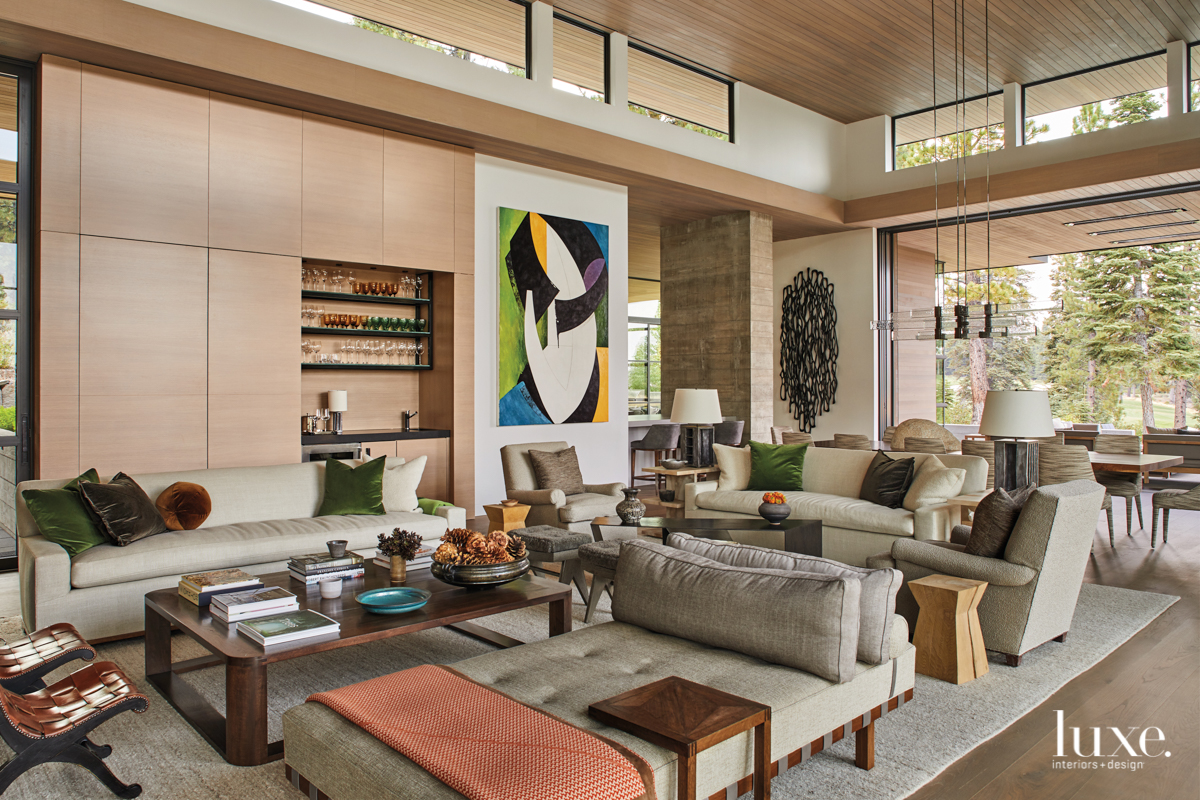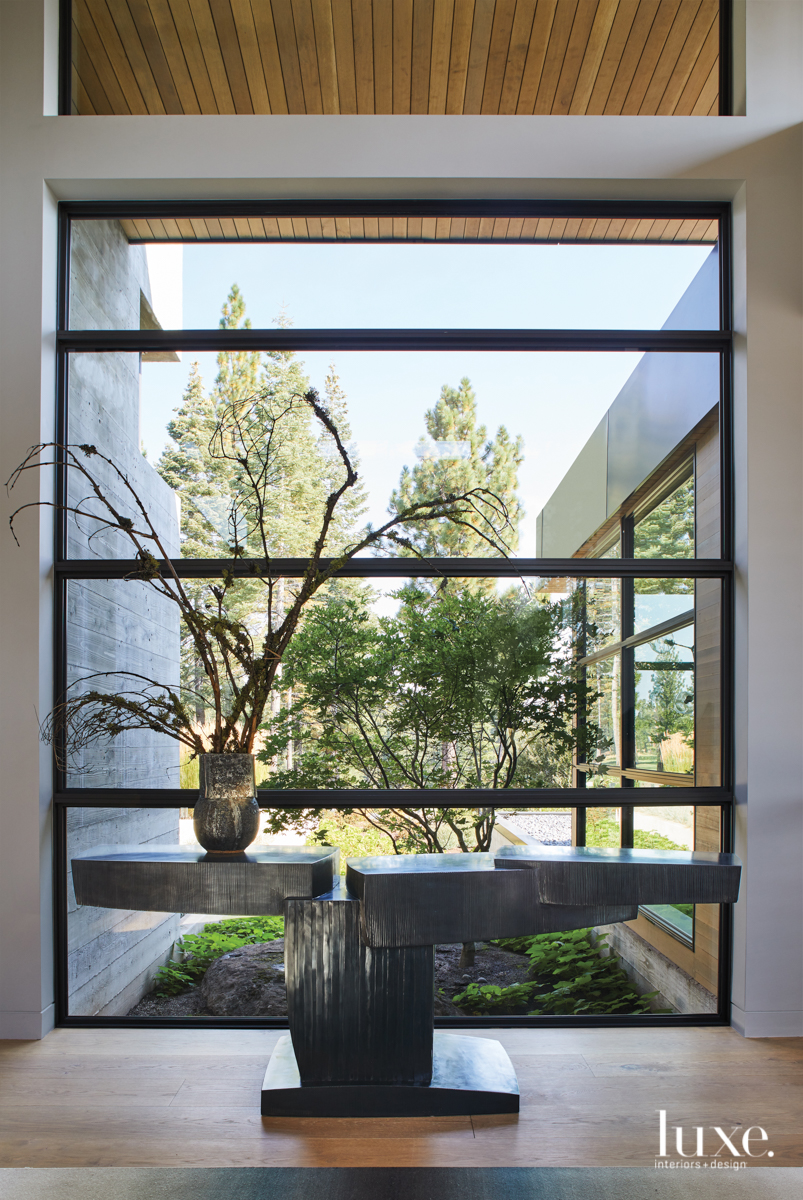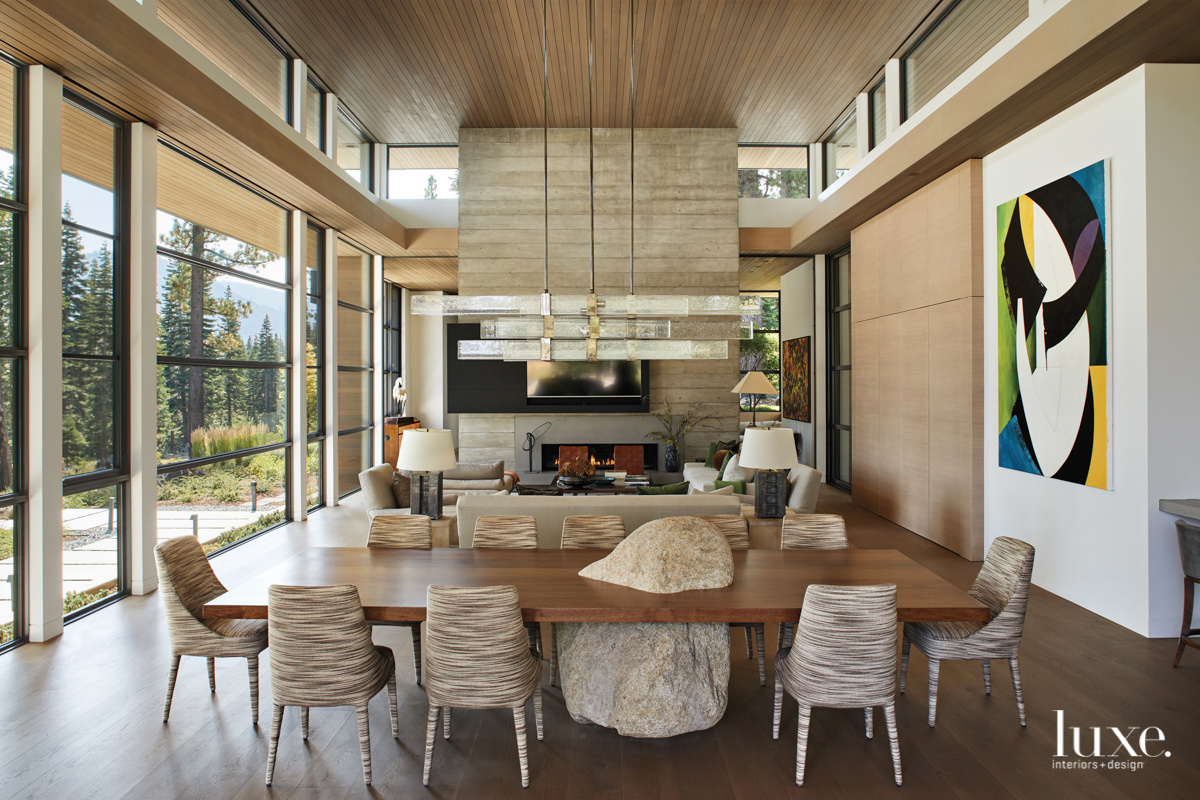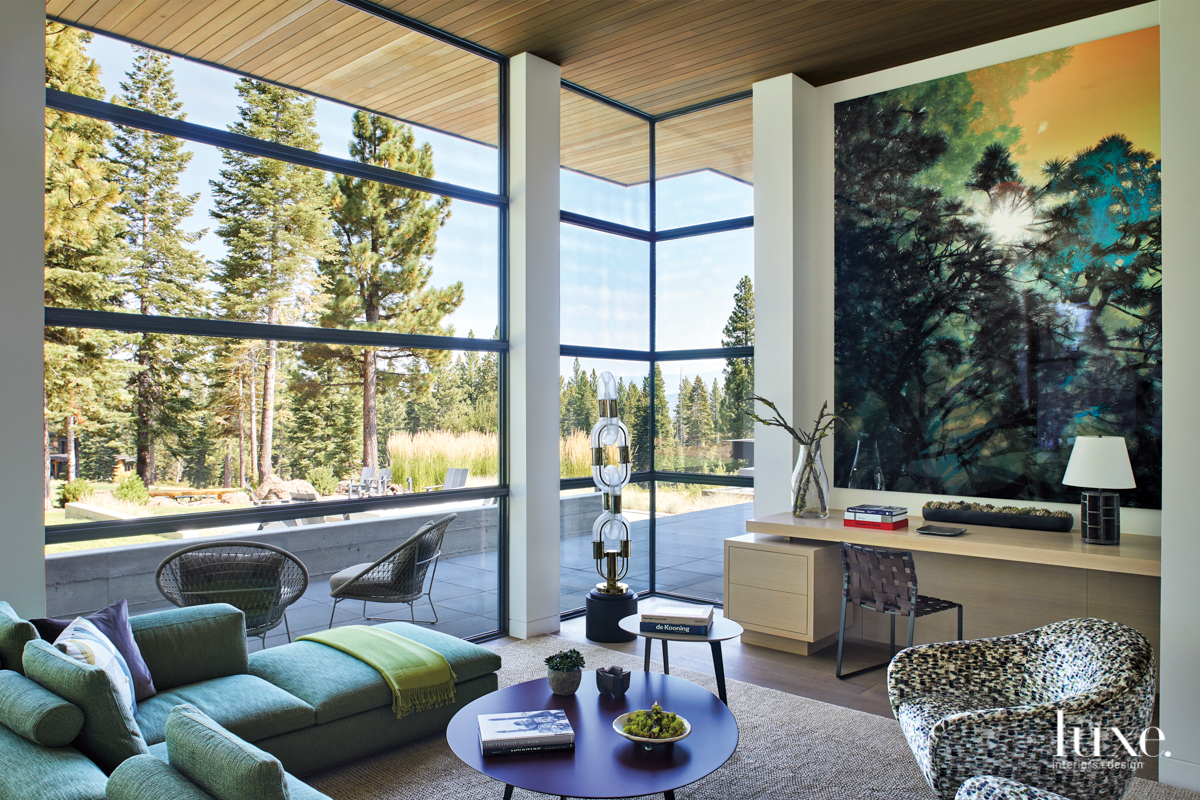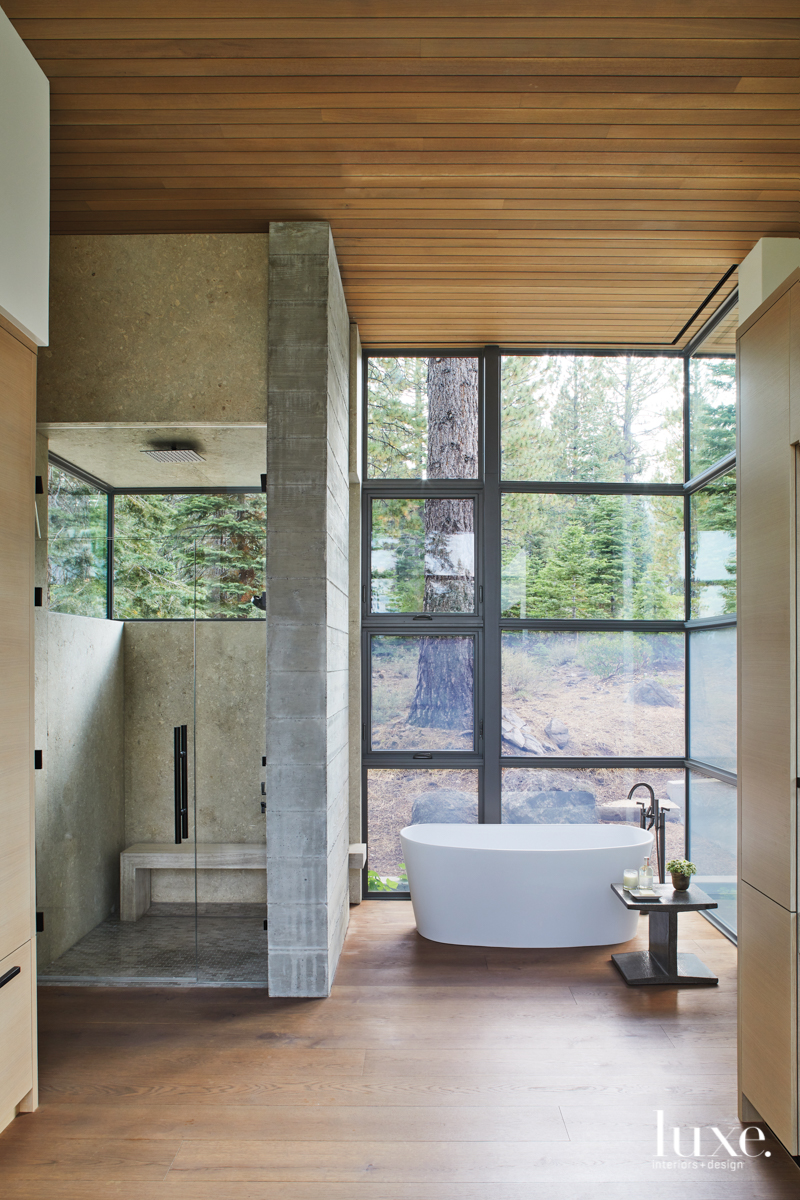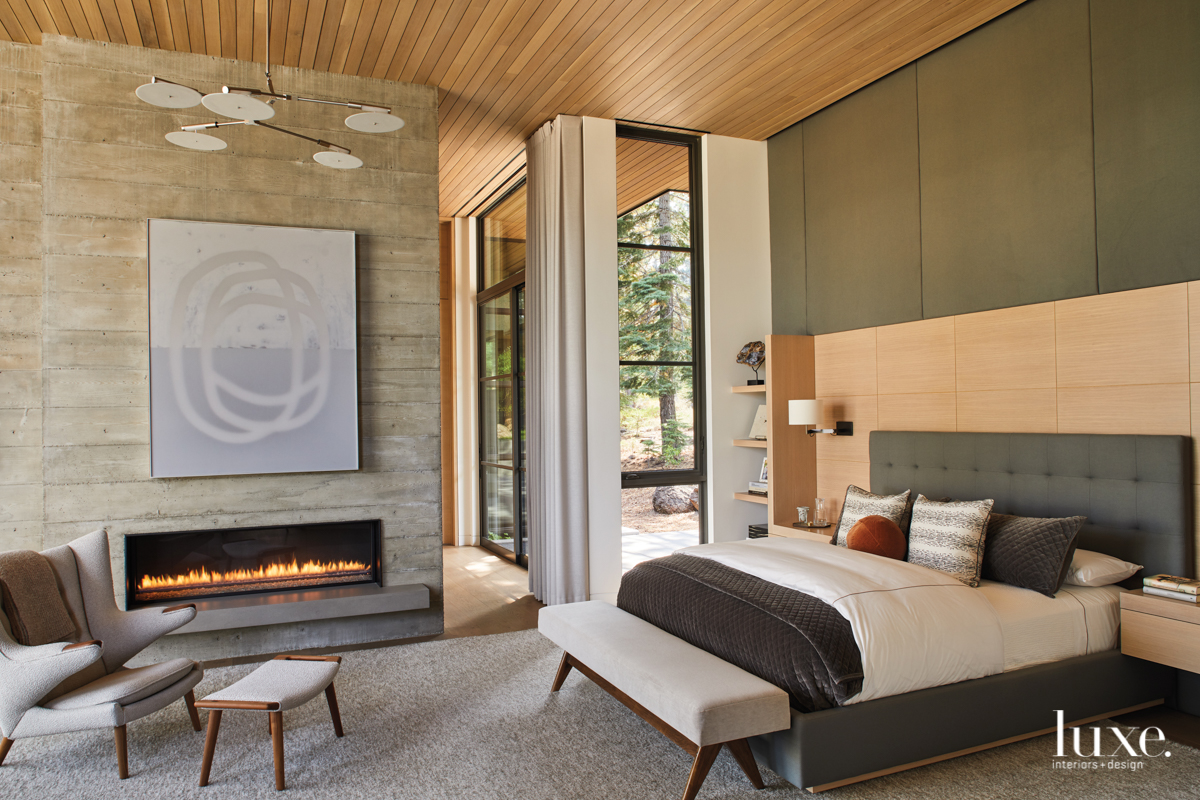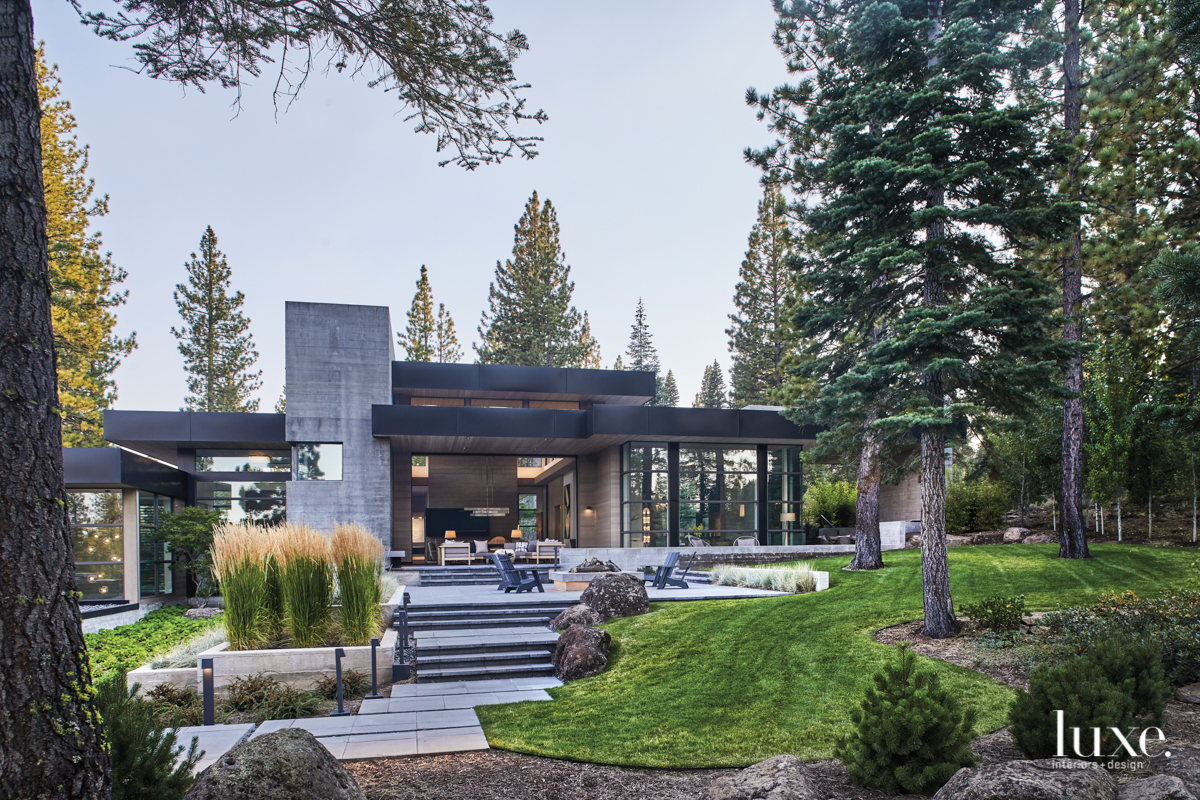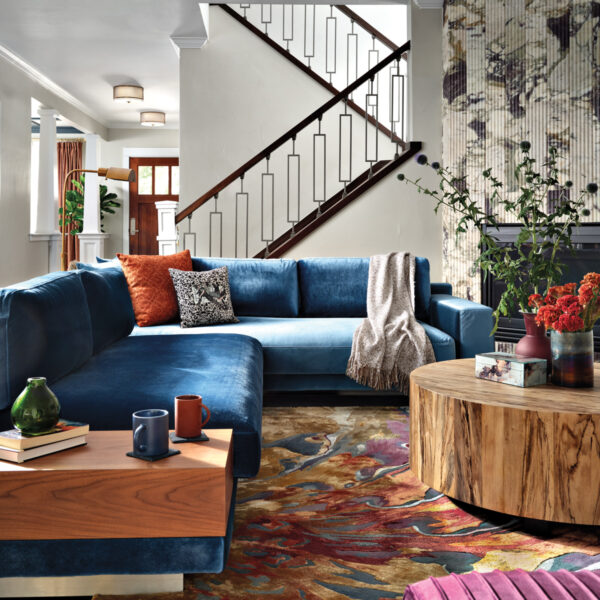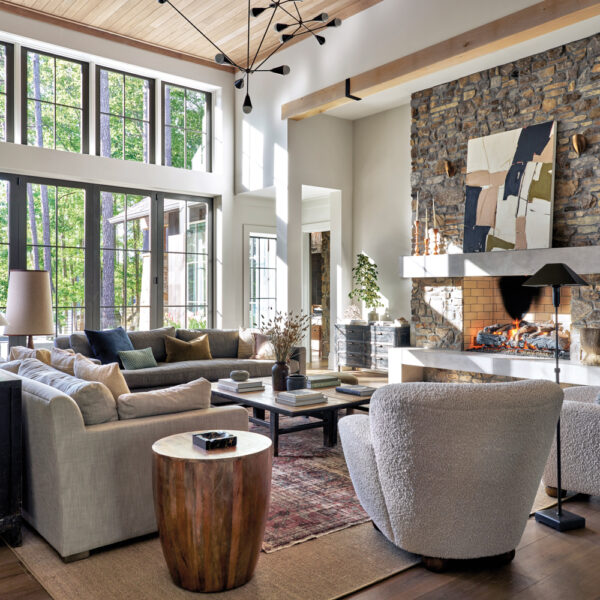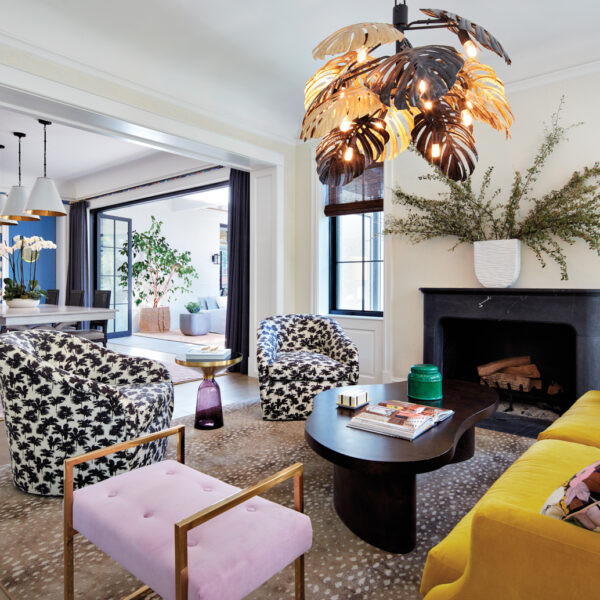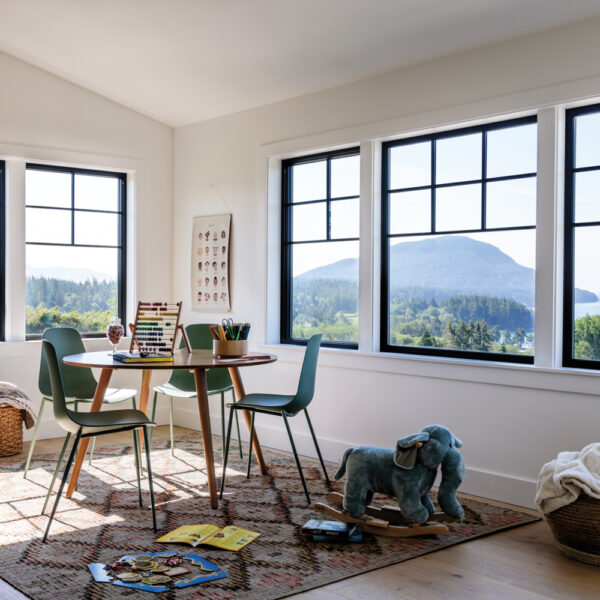Nothing came quickly for the design and construction of this large Truckee, California, retreat for a couple that has five children, 15 grandchildren and two great grandchildren–and that’s precisely why it turned out so well. “We spent a lot of time figuring out the program,” says designer Denise Kuriger of the more than three-year process.
The owners wanted a departure from the traditional style of their primary home near San Diego. So, they sought help from architect Clare Walton to design a series of streamlined, rectilinear forms using board-formed concrete, glass and steel inspired by an image of stacked shoeboxes the wife sent to her. “It’s brilliant,” Walton says, “because the stacked-box approach is so appropriate for the site, which is steep and multilayered.”
The result is a sprawling compound that captures views of the mountain vistas and an adjacent golf course. “It spreads out over the size of a football field,” says Randy Voorhees, construction-site supervisor for general contractor Marshall Williams. As Walton worked on the plans, Kuriger and the wife spent a year planning the warm, contemporary interiors that would bring character to the sleek architecture. “It was a very thoughtful process that allowed us to have exactly what we wanted and how we wanted it,” the wife says.
Scale directed most of the homeowners’ choices. One of their first purchases was a 12-foot-long dining table pierced with a 3,500-pound boulder. To get it into place, Voorhees and his team craned the boulder to the back of the property and moved it in on roller tracks to a reinforced spot in the combined living and dining area, which boasts 19 1/2-foot ceilings. “It could be daunting how big the room is, but it doesn’t feel big because we scaled everything up,” says Kuriger, who also broke down the space with two seating areas that could blend for a crowd or remain separate for smaller conversations. The house itself is like that, she adds, with niches that branch off from larger areas, such as the enclosed breakfast nook off the kitchen, a private office on the other side of the fireplace wall in the living room, and outdoor terraces that open from each public space.
Walton created this layout with an eye toward specific mountain, woods and golf-course views. “There needed to be multiple layers of social space, each strategically separated from one another,” she says, “And when you’re in each space, you capture a variety of view corridors.” In turn, Walton used the outdoors to give the interiors a cohesive feel, tucking different levels into the sloping property, and allowing the main spaces on each to open to terraces through oversize glass doors. Tiered pathways link those terraces all around the house so that “you feel the connectivity,” Walton adds.
Because the colors of the changing seasons are ever-present through broad expanses of glass and steel, Kuriger used a neutral palette punctuated with earth tones of umber, green, gray and gold. She chose a single “hero fabric” containing all those colors–a kids’ bunk-bed drapery–to tell that story. “As we added a little bit of color to the rooms, everything related back to that one fabric,” says Kuriger, who chose finishes like the kitchen’s custom metal vent hood and concrete island to speak directly to Walton’s architecture. She further enlisted furniture maker Joel Brown and ceramicist Michael Smolcich to craft pieces throughout the house that would infuse its stark envelope with handcrafted warmth. “There’s the hand of man throughout the home, which is important in architecture that’s so strong and machined,” Kuriger says.
Outside, landscape designer Eric Schaefer massed plantings that play to the architecture. “We tried to complement the large architectural elements with large landscape elements,” he says, pointing to stands of 30-foot-tall columnar aspens with multiplying numbers of shrubs and ground-cover varieties extending outward to create a layered connection between the house and its land. Just as notable are the ornamental boulders that stud the landscape. “It’s rock that was harvested on a mountaintop,” he adds, including one 20,000-pound boulder that anchors a glassed-in courtyard visible through the home’s entry. “Every rock is just gorgeous–you’ve got this combination of moss and lichen growing on top of an old, weathered surface.”
The owners named their new home Sugar Pine, after an enormous tree that had to be removed during excavation. “Early on, they asked our carpenters to turn it into a table that could fit the entire family for casual dinners outside, in an area that overlooks the golf course,” operations manager Tad Herrington says. “It’s 25 feet long, with 4-inch-thick slabs. We had to leave it in the kiln to dry for more than a year.” That’s how it was with elements crafted for Sugar Pine–they are all highly customized and painstakingly made. Says Kuriger: “Every piece had a journey to get to this house, and now they will be there forever.”

